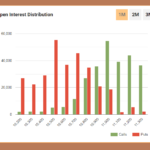Shorting (Short Selling)
We had a small discussion in Module 1 about what shortening is. Now in this chapter, we will discuss in detail about shortening. There is no such thing as shortening in our everyday life, so it is a bit difficult to understand this principle. For example, suppose you want to buy a house at X price and after 2 years want to sell the same house at Y price. In this transaction, the difference between X and Y will be your earnings. In this way, we first buy anything and only after buying it we are able to sell it at profit or loss. But in shorting it is just the opposite where we sell first and buy later.
So, what happens in the market that encourages the trader to sell first? The answer is very simple. When we feel that the price of something will go up, we first buy and later sell it when the price rises. Similarly, when we know that the price is going to go down, we first sell and when the price goes down, we buy it back.
Let us try to understand it with an example. Suppose you and your friend are sitting and watching a cricket match between India and Pakistan. There is a bet between you and your friend. You think India will win and your friend thinks India will lose. It means if India win the match then you will earn money and if India lose the match then your friend will make money. Now look at this from the perspective of the stock market. Suppose there is a stock of India stock market. So, in your bet you are saying that if your stock i.e. Indian team (stock) goes up (team wins) then your money will be made. In the same way your friend is saying that if the Indian team (stock) goes down, that is, if the Indian team loses, then its money will be made. In market language, you are long on the Indian team and your friend is short on the Indian team.
Even after this many questions will be coming in your mind. Because understanding shortening is not that easy. If you do not know the principle of shorting at all, then just remember that you can make money by shorting when there is a possibility of a stock or stock going down. To short a stock or its futures, first you have to sell it and later you buy it. Well the best way to learn it is to short a stock in the stock market and bear the gains or losses. But before you do that, I will try to tell you all the things in this chapter that you should know before shorting.
Shorting of shares in the spot market
Before you go short in the futures market, you should know how to short in the spot market. Imagine a situation-
A trader looks at the daily chart of HCL Technologies Ltd and sees a Bearish Marubozu there.
Apart from the Bearish Marubozu, all other checklist conditions also seem to be fulfilled.
- volume is above average
- Resistance level is present
- Indicators are also confirming this
- The risk-reward ratio is satisfactory
Based on all this the trader expects HCL Technologies to drop 2% the next day.
So, the trader wants to take advantage of this downtrend that is why he makes an intention to short HCL Technologies. Let’s have a look at this trade-
| Stock | HCL Technologies |
| Trade Type | Short (Sell First Then Buy) |
| Time Frame | Intraday |
| Price | Rs.1990/- |
| Quantity | 50 |
| Target | Rs.1950/- |
| % Expected Profit | 2.0% |
| Stoploss | Rs.2000/- |
| Risk | Rs.10/- |
| Reward | Rs.40/- |
Now we know that when there is a possibility of a fall in the stock, the stock or its future is shorted with the expectation of making a profit. In the above table we can see that the stock is to be shorted at Rs.1990.
When you want to short on the trading platform, all you have to do is highlight that stock or its futures contract and then press the F2 button. Doing so brings up the sale order form in front of you. Now you have to fill the quantity in it, give other information and submit it. When you press the submit button the order goes to the exchange. As soon as the deal is completed a short position is created for you in the market.
Now just imagine that when you make a trading position, when do you make a loss? You incur a loss when the stock price moves in the opposite direction to what you expected.
- So when you are shorting a stock, which direction do you expect the price to move?
- your expectation that the share price will go down,
- When will you be at a loss?
- When the stock price will start moving in the opposite direction
- And which direction would that be?
- When the price of your stock starts going up instead of going down
That’s why when you go short the stoploss is always on the upside. That’s why in the table above you can see that the entry price for the short trade is Rs 1990 and the stop loss is ₹ 2000 which is ₹ 10 more than your entry price.
Now after you start your short trade at Rs 1990, two situations can happen:
Scenario 1 – Stock price reaches the target of Rs 1950
In this situation the stock price has moved as you expected. The stock has fallen from ₹1990 to ₹1950 and your target has been met. In this case the trader will close his position. As we know that when a trader creates a short position,
Will first sell at the price of ₹1990
After that buy it at the price of ₹1950.
In this way the trader will earn ₹40 (1990-1950=40) between his sell and buy price in this whole process.
To understand this, you can also see it like this that the trader bought for Rs 1950 and sold for Rs 1990 and earned ₹ 40 in this way. What’s just happening here is that it’s happening in the reverse way where selling first and buying later.
Scenario 2 – Stock price rises to ₹2000
In this case the stock price has gone up and remember that you go short when you think the stock price will go down. You also make profit only when the stock price goes down. If the stock price goes up, you will incur a loss. The same has happened in this case as well and the trader is incurring a loss.
The trader had shorted at the price of Rs 1990, after shorting the share price went up
The price reached ₹2000. Stop loss has also arrived. To avoid further losses, the trader had to exit the position and buy the stock at a higher price.
The trader suffered a loss of ₹10 (2000-1990=10) in the whole process. If you look at it in the traditional way i.e. buy first and sell later, then buying at ₹ 2000 is equal to selling at 1990. It’s all going in the opposite direction here.
Now you must have understood that how you can make money by shorting in case the price goes down.
Shorting in the spot market (from stock exchange perspective)
One of the major hindrances in shorting the spot market is that you can only short intraday. Meaning if you have created a short position then you will have to square off your position by buying shares before the market closes on the same day. Cannot carry this short position till the next day. To understand why this happens, we need to understand how the exchange treats short positions.
When shorting you are selling first. As soon as you sell these shares, in the same way information is sent from the backend to the stock exchange that you have sold such shares. At that time the exchange does not know whether the shares you have sold are in your demat account or not. They think that you will deliver them by evening the shares you have sold. Now to do this, those shares should be in your demat account the next day. It is only after the market closes that the exchange gets to know that you have not completed the deal.
Keeping this in mind, now suppose you have shorted a stock and you want to take advantage of its falling price. Now if the price does not fall after you short and you want to wait one more day for the fall. But after the close of the market, the exchange will know that the shares you have sold are not with you. You must have shares to make delivery of this share, whereas you do not have shares to complete this delivery. This means you will default to the next day. This default will attract heavy penalty. Such a situation is called short delivery.
In case of a short delivery situation, the exchange will conduct an auction in the market to settle the matter. You should read this article to know about the auction market which explains the process of options and the process of penalty in a complete way. I would like to give you a piece of advice that never fall in a situation where short delivery conditions arise. You should always try to close your short trade before the market closes, otherwise, you may end up paying a penalty of up to 20%.
Now a very important thing – only after the market is closed, the exchange gets to know who has not completed their deals. You have to square off your short positions before the exchange detects this. For this reason, other than intraday shorting cannot be done in the spot market.
Yes, if you create your short position in the futures market, you can easily hold it for several days.
Shorting in the Futures Market
Shorting is not banned in the futures market, which is probably why trading in the futures market is so popular. Remember that futures are derivative instruments that move based on the price of their underlying. If the price of the underlying asset is going up or down, the price of the futures will also move up or down. This means that if you have a bearish view on a stock, you can make a short position on it and hold your position.
The way you deposit margin for your long position and then create the position, you will also need to deposit margin for short positions. Margins for both short and long are assumed to be the same, there is no difference.
What does a change in Mark to Market (M2M) look like when you go short in futures? Let us look at an example to understand this. Suppose you have shorted HCL Technologies at a price of 1990. Here the lot size is 125. In the table you can see how the stock price changes over the next few days and how it affects M2M.
| Day | Price for M2M |
Closing Price | Day’s P&L |
| 01 – Short day | 1990 | 1982 | 125 x 8 = 1000 |
| 02 | 1982 | 1975 | 125 x 7 + 875 |
| 03 | 1975 | 1980 | 125 x 5 = 625 |
| 04 | 1980 | 1989 | 125 x 9 = 1125 |
| 05 | 1989 | 1970 | 125 x 19 = 2375 |
| 06 – (Square Off) | 1970 | 1965 | 125 x 5 = 625 |
The two lines which are shown in red color, there is a loss. To calculate the total profit or loss of this transaction, you need to add all the mark to market value –
+1000+875-625-1125+2375+625
= Rs 3125
or we
(Sell Price – Buy Price) × Lot Size
= (19990 – 1965) × 125
= Rs 3125
You have seen that the way long positions are created in the futures market, short positions are also created in the same way. The only difference is that when you make a short position, you profit from the price falling. There is no difference between margin requirement and M2M calculation.
Shorting is a very common practice in active trading. If you want to trade then you should make a habit of doing long trade as well as short trade.
Highlights of this chapter
- For shorting, you sell first and then buy.
- You profit in a short trade when the closing price is lower than your buy price or entry price.
- You incur a loss when the price goes up against the price you shorted.
- In a short trade, the stoploss is above the price you took to short.
- In spot market you can short only in intraday.
- You cannot hold short positions overnight in the spot market.
- You can hold short positions overnight in the futures market.
- Margin is same in both short and long trades.
- Mark to market is calculated in the same way for both short and long trades.

Gaurav Heera is a well known name in the field of stock market analysis and education. His distinguished career, which spans more than ten years, has cemented his reputation as an expert with unparalleled knowledge and innovative strategies for navigating the intricate landscape of the financial markets.





